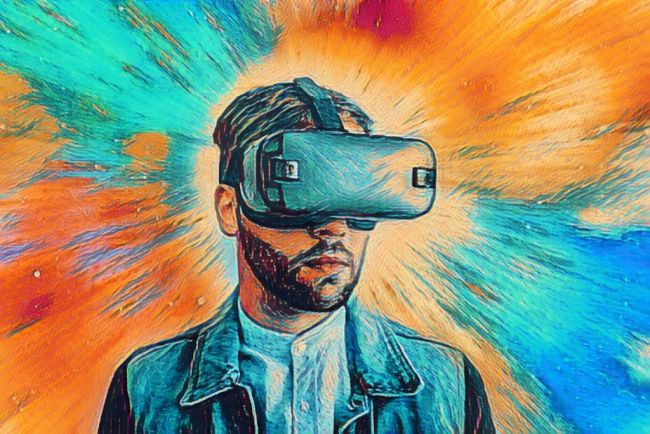Scientists have argued for a while that psychedelic experiences and virtual reality share the common ability to alter perception and visual processing. EEG recordings suggest that both may induce comparable cortical activity and elicit similar neurological responses. Now, a new generation of researchers are combining virtual reality and psychedelics to create new therapeutic paradigms that improve patient care, also creating opportunities to file patents that capture the evolving innovation.
Several companies have publicized patent filings describing a combination of virtual reality and psychedelics. For example, in June 2021, Goodness Growth Holdings, Inc., announced that its subsidiary, Resurgent Biosciences (Resurgent), had filed for a US patent to create an expansive suite of virtual reality (VR) applications that could be used during psychedelic-based therapies to enhance and guide patients through the experience and potentially create optimized, longer-lasting therapeutic outcomes. In May 2022, Enosis Therapeutics, an Australian medical technology and research company, announced that it was evaluating the integration of virtual reality into existing psychedelic protocols to develop novel technology.
As the technology matures, the industry should expect to see an uptick in patent filings as companies seek to harness the power of virtual reality to create the next generation of psychedelic therapies.
RELATEDPOSTS
A Deeper Look at MindMed's Corporate Update
Learning From Wonderland: A Look at Psychedelics' Top Event
Awakn's Phase 3 Trial Approved for Government Funding
Another company, Incannex Healthcare Limited announced recently that it has executed a license agreement with Monash University to develop a novel treatment that combined Virtual Reality and psychedelics.
What should we expect next as the two worlds merge?

The world of virtual reality
Virtual reality, in the traditional sense, describes an artificial computer-generated three-dimensional environment that users can interact with using devices such as headsets or their mobile phones. Where headsets or other immersive devices are used, the user is often placed inside an experience that stimulates multiple senses including vision, hearing, and touch. There is often a sense of detachment from the actual environment. A subset of virtual reality is augmented reality, where artificial objects are placed within the user's surroundings, and the user interacts with that object without losing connection with the actual world. This is more common on the mobile side and does not involve the user replacing the live surroundings with an artificial environment that occupies the senses.
Virtual reality has now become a part of the mainstream with technology behemoths developing their own platforms to tap into the enormous market. While gaming and entertainment remain the largest consumer space for virtual reality, alternate applications in healthcare are gaining increased attention. Improvements in both software and hardware are making it easier for consumers to access virtual reality environments, and innovators in the healthcare space are using the promise of virtual reality to improve patient care and offer new therapeutic options.
One such option is combining virtual reality with psychotropic medication to treat mental health conditions, in novel environments that would have been unimaginable even a decade ago.
Combining psychedelics and VR
This combination of psychedelics and virtual reality offers new opportunities for innovators to obtain patent protection, especially where patents on psychedelics alone may be challenging. Psychedelic compounds are well known in the art and are often derived from nature. Thus, the molecule itself cannot be patented. Innovators are seeking different strategies to protect their investment in psychedelics. For example, the industry has seen patents filed on novel crystalline forms, synthetic pathways, extraction protocols, novel formulations, methods of use, and methods of treatment in various disease conditions. As we see more data emerge from clinical trials with psychedelics, we are likely to see patent applications covering stability, pharmacokinetic, and pharmacodynamic data.
Combining psychedelics with virtual reality opens opportunities to create valuable new intellectual property that can be monetized by emerging companies to support their research and development. The handful of patents that have been treated thus far may well be the predictor of a new therapeutic landscape that has the potential to transform healthcare in ways that seem unimaginable today.
The content of this article is intended to provide a general guide to the subject matter. Specialist advice should be sought about your specific circumstances.

